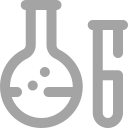
Product Description
Clofibrate is an agonist of PPAR, with EC50s of 50 μM, ∼500 μM for murine PPARα and PPARγ, and 55 μM, ∼500 μM for human PPARα and PPARγ, respectively.
IC50 & Target: EC50: 50 μM (Murine PPARα), ∼500 μM (Murine PPARγ), 55 μM (Human PPARα), ∼500 μM (Human PPARγ)[1]
In Vitro: Clofibrate is a PPAR agonist, with E50s of 50 μM, ∼500 μM for murine PPARα and PPARγ, and 55 μM, ∼500 μM for human PPARα and PPARγ, respectively[1]. Clofibrate (0.5, 1, 2 mM) increases FABP1 expression in two fatty acid (FA)-treated rat hepatoma cells. Clofibrate lowers ROS levels after early treatment, much more than late treatment in FA-treated cells[2].
In Vivo: Clofibrate (0.5%) up-regulates serum concentrations and hepatic expression of FGF21 in fetuses, with a return to basal levels after Clofibrate administration withdrawal. Clofibrate administration-offspring have significantly higher expression of thermogenic genes (Ucp1, Cidea, Ppara Ppargc1a, Cpt1b) and UCP1 protein levels in response to HFD in inguinal fat, but not in retroperitoneal (combined with perirenal) or epididymal fat[3].

Information
CAS No637-07-0
FormulaC12H15ClO3
Clinical Informationclinicalinformation
PathwayCell Cycle/DNA Damage
TargetPPAR

Specifications
Purity / Grade>98%
SolubilityDMSO : ≥ 100 mg/mL (412.03 mM); H2O : < 0.1 mg/mL (insoluble)
Smilessmiles

Misc Information
Observed Molecular Weight242.7